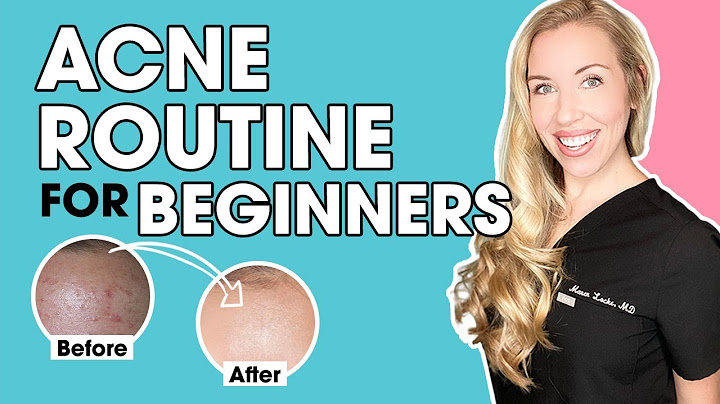Hidradenitis suppurativa is a condition in which lumps form under the skin, typically in the groin or armpit areas, which over time heal with extensive scar formation. Because this rare condition is often misdiagnosed, many people experience progressively worsening symptoms for a long time before receiving the right diagnosis and right treatment. Show
With deep experience in recognizing the common as well as uncommon signs of hidradenitis suppurativa, the specialists of the Mount Sinai Department of Dermatology are highly skilled in diagnosing and treating this rare condition. We are also seeking new and better treatment options through clinical trials. In addition, we are the only institution in New York State with physicians who are board certified in both rheumatology and dermatology, enabling us to offer uniquely specialized care for hidradenitis suppurativa patients. Causes of Hidradenitis SuppurativaAlthough the exact cause of hidradenitis suppurativa is not yet known, it is believed that the condition begins in the hair follicle, where keratin (a type of protein), sweat, and bacteria build up to the point of bursting, forming a lump. Hidradenitis suppurativa appears to run in families and could be triggered by factors like cigarette smoking and being overweight. Women are more likely to develop this condition than men. Symptoms of Hidradenitis SuppurativaThis condition involves lumps forming in the skin that may cause pain, itching, burning, and swelling. The lumps can be pus filled. Multiple lumps can appear at the same time, grow, break open, and heal, then reappear in the same spot. Over time they can heal with extensive scarring. While these lumps mostly form in the armpit and groin, they could also appear in other areas, such as the breasts, abdomen, and inner thighs. If untreated, hidradenitis suppurativa could lead to significant scarring, infections, an increased risk of skin cancer, anxiety, and impaired quality of life, to name a few associations. Treatments for Hidradenitis SuppurativaBecause hidradenitis suppurativa is often misdiagnosed, patients can go for years as symptoms worsen and as lumps rupture and scar. At Mount Sinai’s Department of Dermatology, our specialists are experienced in diagnosis and providing the full range of hidradenitis suppurativa treatments. We are also investigating new therapies through clinical trials. Following diagnosis, which includes a skin exam and testing of any fluid that leaks from the lesions, your doctor will customize the best care plan for you. In addition to helping you develop a skin care plan, we will offer treatment options include the following:
IMPORTANT SAFETY INFORMATION ABOUT HUMIRA® (adalimumab)1What is the most important information I should know about HUMIRA?You should discuss the potential benefits and risks of HUMIRA with your doctor. HUMIRA is a TNF blocker medicine that can lower the ability of your immune system to fight infections. You should not start taking HUMIRA if you have any kind of infection unless your doctor says it is okay.
What should I tell my doctor BEFORE starting HUMIRA?Tell your doctor about all of your health conditions, including if you:
Also tell your doctor about all the medicines you take. You should not take HUMIRA with ORENCIA® (abatacept), KINERET® (anakinra), REMICADE® (infliximab), ENBREL® (etanercept), CIMZIA® (certolizumab pegol), or SIMPONI® (golimumab). Tell your doctor if you have ever used RITUXAN® (rituximab), IMURAN® (azathioprine), or PURINETHOL® (mercaptopurine, 6-MP). What should I watch for AFTER starting HUMIRA?HUMIRA can cause serious side effects, including:
Call your doctor or get medical care right away if you develop any of the above symptoms. Common side effects of HUMIRA include injection site reactions (pain, redness, rash, swelling, itching, or bruising), upper respiratory infections (sinus infections), headaches, rash, and nausea. These are not all of the possible side effects with HUMIRA. Tell your doctor if you have any side effect that bothers you or that does not go away. Remember, tell your doctor right away if you have an infection or symptoms of an infection, including:
HUMIRA is given by injection under the skin. This is the most important information to know about HUMIRA. For more information, talk to your health care provider. Uses HUMIRA is a prescription medicine used:
US-HUM-210186 Can a dermatologist treat hidradenitis suppurativa?Hidradenitis suppurativa (HS) is a skin condition that causes painful lumps deep in your skin. These lumps usually develop on parts of the body where skin touches skin like the armpits, inner thighs, and groin area. Dermatologists are the doctors who specialize in the diagnosis and treatment of this condition.
Can a dermatologist diagnose hidradenitis suppurativa?A dermatologist is often the doctor who diagnoses a patient with hidradenitis suppurativa (HS) Getting an accurate diagnosis and an individualized treatment plan can prevent HS from worsening.
What is the best cream for hidradenitis suppurativa?Topical antibiotics, such as clindamycin (Cleocin T, Clinda-Derm), are commonly prescribed for mild HS. They can treat infections, reduce inflammation, and prevent new lesions from forming. They may also reduce the odors that can sometimes accompany infection.
Does insurance cover hidradenitis suppurativa surgery?Surgery for HS can cost several thousands of dollars. Wide excision is generally more expensive than deroofing because it requires general anesthesia and a hospital stay. Health insurance should cover all or most of the costs for these procedures, with the exception of laser treatments.
|

Advertising
LATEST NEWS
Advertising
Populer
Advertising
About

Copyright © 2024 muatrau Inc.













